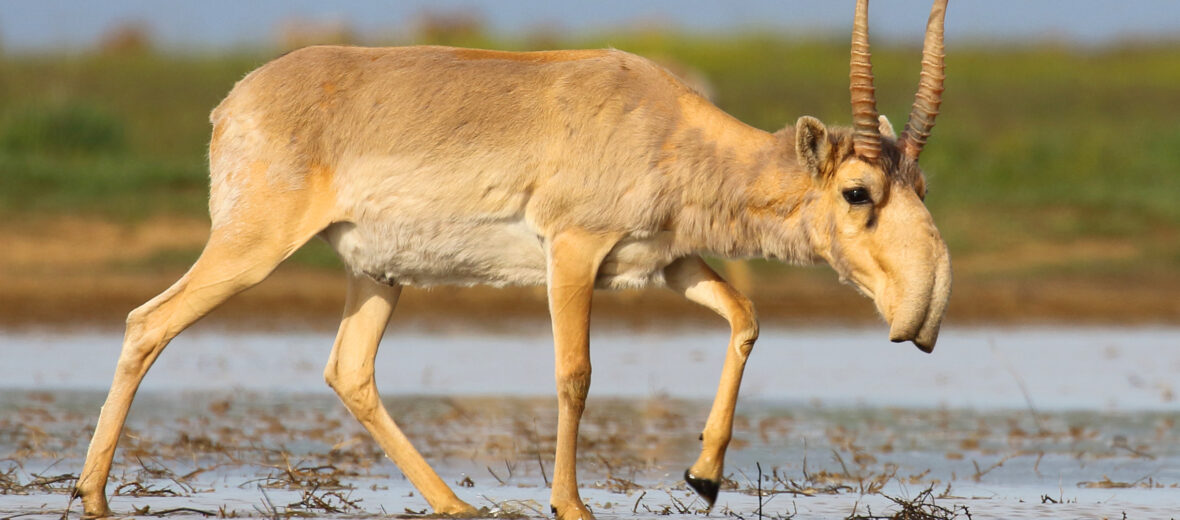
This diminutive antelope with a big nose that kind of looks like something out of a Dr. Seuss book is called a saiga antelope. Saigas dwell in the freezing, treeless Eurasian steppes and is tirelessly hunted by poachers for their horns for folk medicine. Their horns are supposedly remedies for a host of ailments. None of which have ever been proven to work. Yet, humans still hunt these poor critters to near extinction. Aside from being stalked they also have to fight off death by bacterium and viruses. Such is the life of saigas. Due to hunting for horns, hide, and meat, as well as predation by wolves, these critters are listed as Critically Endangered by the IUCN. This is a special request article from Ryan.
First the Stats…
Scientific name: Saiga tatarica
Weight: Up to 110 lbs.
Length: Up to 4.9 feet
Height: Up to 2.5 feet
Lifespan: Up to 10 years
Now on to the Facts!
1.) Only males have horns. And due to their being hunted for said head gear, there is a disproportionate number of males to females.
2.) Their horns are used for fighting 1 another for breeding rights. Fights are intense and often end fatally.
3.) By their second day of life, a juvenile can already outrun a human.
4.) They are herbivores (eat plant matter) that feast upon herbs, lichens, and shrubs.
5.) Herds consist of about 30 – 40 individuals, mostly females and a few males that guard them.
But wait, there’s more on the saiga!
6.) Besides their noses, saigas are famous for their long and tiring migrations each year to their breeding grounds in the south.
7.) During migrations thousands of these antelopes travel up to 72 miles a day!
Did you know…?
The saiga is fast! They can run nearly as fast as a cheetah!
8.) The nose knows. Their nasal cavities are complex organs with a series of hairs, glands, and mucous tracts (turbinates) that help to warm the frigid air, during the freezing winter months, and filter out dust during the dry, arid summer months. Only whales have a similar nasal arrangement.
9.) Besides humans, wolves are their biggest predators.
10.) Females give birth in April or May to twins or a singleton.
Now a Short Saiga Antelope Video!
Also, check out the Critter Science YouTube channel. Videos added frequently!
Want to suggest a critter for me to write about? Let me know here.



